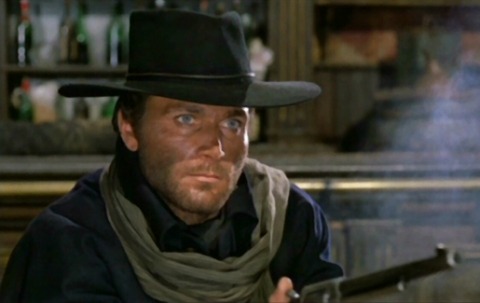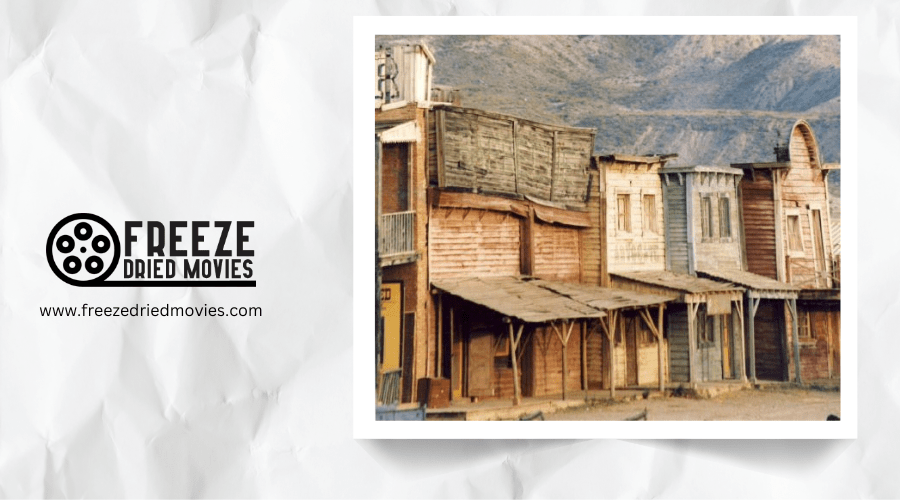Highest-Grossing Spaghetti Western Films of the 1960s

When you think of spaghetti westerns, you're likely picturing Clint Eastwood's squint or hearing Morricone's haunting whistles. But behind these iconic elements lies an astonishing commercial success story. In 1960s Italy, these films weren't just cultural phenomena—they were box office juggernauts, with several titles surpassing the billion-lire mark. The numbers tell a fascinating tale of how Italian directors transformed a quintessentially American genre into something entirely new, forever changing cinema and making fortunes along the way.
The Birth of a Genre: Origins of the Spaghetti Western
While American westerns dominated cinema for decades, Europe quietly began creating its own distinct western tradition in the late 1950s. You can trace the Spaghetti Western's first steps to 1958 when "The Sheriff of Fractured Jaw" became the first American-British western filmed in Spain. By 1961, "Savage Guns" further established Spain as the perfect backdrop for these European-made films.
The real turning point came in 1964 with Sergio Leone's "A Fistful of Dollars," introducing Clint Eastwood's nameless character that would define the genre's style and tone. That same year, over 20 Italian production companies jumped into the western market, sensing box office success.
By 1968, these films reached their peak, comprising one-third of all Italian cinema - a remarkable achievement in such a short time. Much like how Technicolor introduction in 1932 transformed American filmmaking with vibrant visuals, the Spaghetti Western brought its own revolutionary visual style to the screen.
The Box Office Phenomenon: Trinity Takes Italy by Storm
Just as Leone's gritty westerns had captivated audiences in the mid-1960s, a new phenomenon swept through Italian theaters in 1970 with the release of "They Call Me Trinity." This low-budget comedy western, starring the charismatic duo of Terence Hill and Bud Spencer, shattered expectations by grossing over 1 billion Lire at the Italian box office.
The Trinity series marked a significant genre shift for spaghetti westerns, introducing a lighthearted tone that resonated with viewers. "Trinity Is Still My Name" followed in 1971, becoming another massive hit.
You'll appreciate why these films made such an impact:
- Terence Hill's charming, lazy gunslinger persona
- Bud Spencer's gruff but lovable strongman character
- Their perfectly-timed comedic brawls that replaced the violent gunfights of earlier westerns
Similar to how stereoscopic photography transformed cinema in the 1950s, the Trinity films revolutionized the western genre by offering audiences a fresh perspective.

Leone's Dollars Trilogy: Redefining the Western Formula
Before Terence Hill and Bud Spencer became household names, Sergio Leone had already transformed the western genre with his revolutionary Dollars Trilogy. You'll find these three films—A Fistful of Dollars (1964), For a Few Dollars More (1965), and The Good, the Bad and the Ugly (1966)—among the highest-grossing spaghetti westerns of the decade.
What made Leone's vision so iconic? He introduced Clint Eastwood as the cynical "Man with No Name," an antihero who rejected Hollywood's traditional righteous cowboy. Leone's signature style featured contemplative long takes and extreme close-ups, while Ennio Morricone's haunting scores perfectly complemented the on-screen action.
The trilogy's gritty realism, morally ambiguous characters, and unflinching portrayal of violence captivated audiences worldwide, permanently altering cinema's western landscape. This stark departure from the established western formula contrasted with John Wayne's rugged, principled hero archetype that dominated American westerns for decades.

Django and Its Many Offspring: A Profitable Franchise
The 1966 release of Sergio Corbucci's "Django" starring Franco Nero ignited one of the most prolific franchises in spaghetti western history. Despite being banned in the UK until 1993 due to its extreme violence, the film achieved cult classic status and launched over 30 sequels and spinoffs across two decades.
The magnetic antihero Django embodied the perfect blend of vengeance and moral ambiguity. Franco Nero's return in "Django 2: Il grande ritorno" (1987) reignited audience enthusiasm. The consistent formula of stylized violence and gritty storytelling created reliable commercial appeal.
The Django franchise ultimately became the financial backbone of the spaghetti western boom, proving that Italian filmmakers had mastered their own distinctive western formula.
The Spanish Connection: Almería's Role in Western Success
While the Django franchise dominated the commercial landscape of spaghetti westerns, behind every iconic frame was a landscape that powerfully shaped the genre's visual identity. That landscape was Almería, Spain, where the arid, rugged terrain of southern Andalusia perfectly mimicked the American West.
You'll find the Tabernas Desert transformed into a permanent Wild West set, with purpose-built saloons and jails reused across numerous productions. Sergio Leone's classics—A Fistful of Dollars, For a Few Dollars More, and The Good, the Bad and the Ugly—all leveraged this stunning backdrop.
What made Almería truly indispensable was its low-cost production environment. The affordable labor and facilities allowed producers to create profitable westerns on tight budgets. Today, these filming locations live on as popular tourist attractions and theme parks.

Ennio Morricone: The Sound That Sold Tickets
Few creative elements defined spaghetti westerns more distinctively than Ennio Morricone's revolutionary musical scores. His iconic scores became inseparable from the films' commercial success, particularly in his collaborations with Sergio Leone. When you watched "The Good, the Bad and the Ugly," you weren't just seeing a film—you were experiencing Morricone's genius through his unconventional instrumentation and evocative themes.
What made Morricone's compositions drive ticket sales:
- The blend of traditional Western motifs with experimental elements created an instantly recognizable sound
- His ability to craft moods ranging from intense suspense to playful levity enhanced every scene
- The memorable themes elevated these films from mere entertainment to cult status
Morricone's musical fingerprint wasn't just background—it was a primary reason for the enduring popularity and global appeal of the genre.
Star Power: How Actors Drove Box Office Results
Three rugged, charismatic actors dominated the financial landscape of spaghetti westerns during their golden era. Clint Eastwood's portrayal of the "Man with No Name" catapulted Leone's trilogy to unprecedented success, with The Good, the Bad and the Ugly generating over 1 billion lire in Italy alone.
Franco Nero's star rose meteorically after Django, a role so commercially successful it spawned more than 30 sequels and imitations. Meanwhile, Giuliano Gemma captured Italian audiences' hearts with performances in The Return of Ringo and Day of Anger, even if his appeal didn't always translate internationally.
What's clear is that box office performance hinged on these charismatic leading men. Their distinct personas attracted loyal followings who keenly anticipated each new western, making actor selection perhaps the most vital financial decision for producers.
The Zapata Westerns: Political Themes and Commercial Appeal
From the smoke-filled arenas of revolutionary Mexico emerged the distinct Zapata Western subgenre, where political conflict replaced traditional western showdowns. These films resonated with the Italian audience by mirroring their post-WWII experiences under foreign influence.
Directors like Damiano Damiani, guided by leftist ideologies, crafted powerful narratives that criticized the pro-American government while achieving commercial appeal.
The emotional impact of these films came from:
- The stark portrayal of outsiders exploiting local populations
- The betrayal felt by communities under occupation
- The revolutionary spirit fighting against oppression
"A Bullet for the General" (1967) exemplifies this blend of entertainment and social commentary, weaving themes of loyalty and political assassination into a commercially viable package that Italian viewers could relate to their own sociopolitical circumstances.
Marketing Magic: How Spaghetti Westerns Were Sold to Italian Audiences
While Zapata Westerns captivated audiences with revolutionary themes, their success relied heavily on innovative marketing strategies that transformed Italian cinema culture. You'd immediately recognize the eye-catching posters emphasizing violence, action, and exotic settings that became hallmarks of the genre's promotion.
Distributors cleverly leveraged star power, prominently featuring Sergio Leone's directorial vision or Clint Eastwood's rugged persona to draw crowds. Marketing campaigns often highlighted the political subtext within these films, connecting with Italians' post-war experiences and complex feelings toward American influence.
Ennio Morricone's haunting soundtracks became central to promotional materials, with his distinctive melodies helping build anticipation for new releases. Beyond theaters, extensive merchandising efforts—from novelizations to action figures—created a cultural phenomenon that extended the spaghetti western experience far beyond the cinema screen.
Beyond Italy: Global Distribution and International Box Office Impact
The international reach of spaghetti westerns extended far beyond the rolling hills of Italy, creating a global phenomenon that rewrote box office expectations across continents. Worldwide box office data reveals that films like Django achieved greater success in markets like Germany than in their Italian homeland, demonstrating how international audience preferences often diverged dramatically.
Actor popularity across borders transformed certain films into unexpected sleeper hits despite modest Italian performances. Political themes resonating with specific regional sensibilities drove box office surges in targeted markets. Re-releases, television broadcasts, and home video availability extended films' cultural impact, complicating our understanding of their initial reception.
When evaluating a spaghetti western's true success, you'll find global distribution patterns tell a more complete story than isolated Italian figures, painting a complex picture of these films' enduring international appeal.



